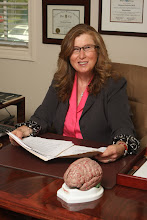Stroke is the second leading cause of death worldwide. A majority of patients survive stroke, however, making this disorder a major source of human disability. Although most patients have some spontaneous behavioral improvements after a stroke, the recovery is generally incomplete. Compounding this burden of disability is the fact that one in four patients who have a stroke is under 65 years of age.
An emerging approach to reducing the degree of disability after a stroke focuses on brain repair. Repair therapies aim to restore the brain, a goal that differs from that of neuroprotection therapies, in which the aim is to limit acute stroke injury. A number of repair-related therapies have been defined in preclinical studies. Such therapies can produce enduring behavioral gains when introduced days to months after the onset of stroke. Several classes of therapy are under study for brain repair, including the use of stem cells, growth factors, small molecules, electromagnetic stimulation, and intensive physiotherapy.1 Many of these therapies, including robot-based physiotherapy,2 are already in human trials.
It is in this context that Lo et al.3 describe a multicenter, randomized, controlled trial to evaluate the effect of robotic therapy on motor status in people with long-term disability after stroke. As reported in this issue of the Journal, the primary study hypothesis was that robotic therapy, when compared with intensive comparison therapy or usual care, would lead to greater improvements in upper-limb function at 12 weeks, as measured by the change in score on the Fugl-Meyer scale. Patients were randomly assigned to one of three types of treatment: robot-assisted therapy, which consisted of high-intensity, repetitive movements of the proximal and distal arm; intensive comparison therapy, which matched the robotic therapy in schedule, form, and intensity but did so with the use of conventional rehabilitation techniques; or usual care, which may have included various types of physical and occupational therapy. Subjects in the two intensive-therapy groups received three sessions (each approximately 1 hour in duration) per week over 12 weeks. Patients in the trial varied widely in the time since the onset of stroke (6 months to 24 years), had multiple coexisting illnesses (including mental health conditions and previous strokes), and were receiving multiple medications.
The investigators' results did not support their study hypothesis. When robot-assisted therapy was compared with either intensive comparison therapy or usual care, no significant differences in the change in the Fugl-Meyer score were seen. There were no safety concerns. In secondary analyses extending to 24 weeks after treatment, robot-based therapy was better than usual care but was not better than intensive comparison therapy. However, since function had improved in patients in the two active treatment groups, these findings reaffirm the idea that motor status can be improved in patients with long-term disability after stroke.
Lo et al. successfully completed a difficult study and achieved a high rate of compliance, a low dropout rate, an extended follow-up period, and careful matching of therapy details across the two active treatment groups. But some basic facts of the chronic phase of stroke can frustrate hypothesis testing in clinical trials. Behavioral gains in the active-treatment groups were smaller than anticipated in power calculations, possibly because the average baseline motor deficits in patients were severe, and severe deficits are harder to improve. Finding a treatment difference between groups also might have been hampered by recruitment of highly motivated patients in all three study groups, since patients who had had a stroke sometimes many years earlier had to agree to leave home for 36 visits to a research laboratory.
Other features of the patients also may have influenced study outcomes. Patients had a substantial number of coexisting illnesses in multiple domains. For example, depression might have influenced results, given that 38% of patients were taking antidepressants. In addition, 73% of all study enrollees were receiving some form of rehabilitation therapy at baseline — a very high rate for patients with long-term disability after stroke4 — and this proportion changed little throughout the study. The high rate of rehabilitation therapy outside study protocol but concomitant with study interventions, as observed by Lo et al., is similar to previous experience in patients months or years after stroke5 and complicates hypothesis testing. What else did subjects practice during the other 165 hours per week? The experience of Lo et al. reminds us that many factors can have a substantial effect on studies involving patients after stroke and prompts conservative power calculations for future repair-based trials.
In the bigger picture, the potential for robotic therapy after stroke remains enormous. Robotic devices can provide therapy in different functional modes, a point that was not examined by Lo et al. Robots work in a consistent and precise manner and over long periods without fatigue.6 They can modulate timing, content, and intensity of training in reproducible ways, with a reduced need for human oversight.2 Robotic devices can also measure the performance of patients during therapy. In addition, robot-based therapy can interface with computers in brain-stimulation treatment or to provide simultaneous cognitive training.
The findings of Lo et al. are of broad value to planning repair-based trials. Movement training, at the heart of the current study, stands on its own as a means of improving behavior in the stroke-injured brain, as shown by Wolf et al. in a phase 3 trial.7 But movement training will also be of critical value as an adjunctive therapy to other treatments that target brain repair, such as the use of growth factors or stimulants. Repair-based therapies drive maximum brain plasticity and achieve best behavioral gains when they are shaped by training and experience.8 Thus, the findings in the active treatment groups in the study by Lo et al. will be instructive in future trials.
These results challenge us to better stratify patients with long-term disabilities after stroke. Such patients are generally selected on the basis of behavioral status. Functional neuroimaging studies have clearly shown that a single behavioral phenotype can arise on the basis of many different brain states. Anatomical and physiological testing might assist in the identification of patients whose brains have sufficient biologic substrate to improve in response to therapy. Toward this end, recent studies suggest that measures of injury to the central nervous system9 or of brain function10 can help predict a patient's capacity for treatment gains after stroke. Many different neurobiologic states can produce a particular behavioral picture, but only some of these states are likely to yield improved behavior in response to a repair-based therapy.
Studies such as that by Lo et al. reinforce the theory that the adult brain has the capacity for clinically relevant plasticity even in the chronic phase after a stroke. The future holds great hope for the development of brain-repair protocols to greatly reduce the degree of disability after stroke.
Source Information
From the Departments of Neurology and Anatomy and Neurobiology, University of California, Irvine. This article (10.1056/NEJMe1003399) was published on April 16, 2010, at NEJM.org.
Wednesday, April 21, 2010
Subscribe to:
Post Comments (Atom)


No comments:
Post a Comment